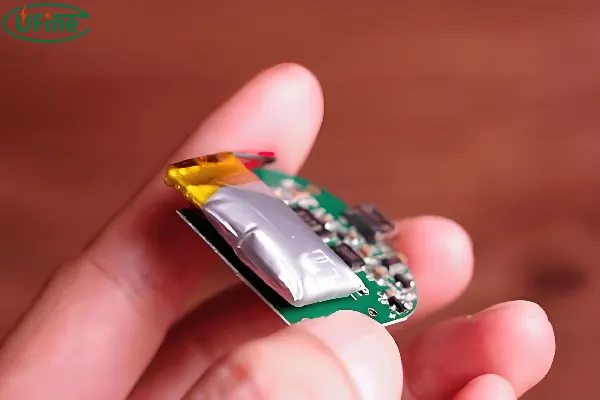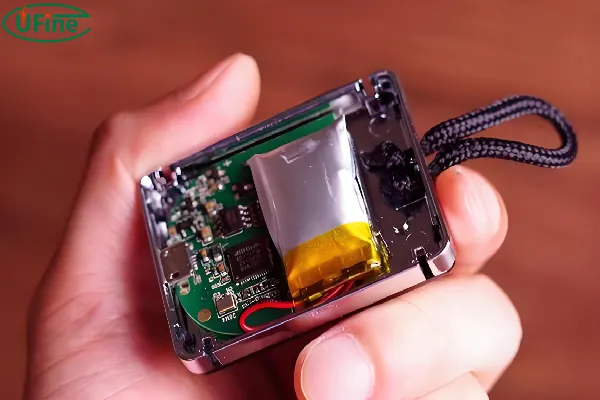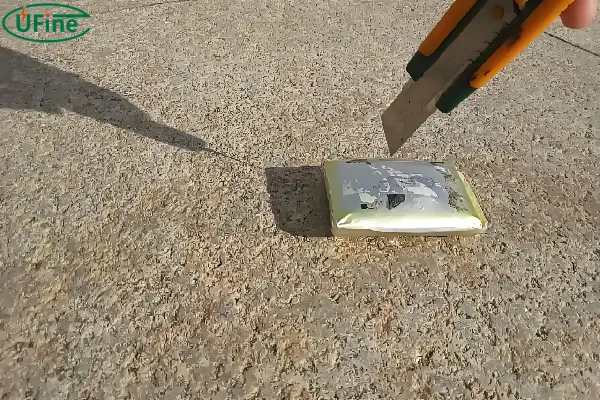Lithium polymer (LiPo) batteries are widely used due to their high energy density and lightweight design. From smartphones to drones, these batteries power many of our favorite gadgets. However, one issue that can arise is battery swelling, which can be alarming and potentially dangerous if not handled correctly. This comprehensive guide will help you understand why lithium polymer batteries swell, recognize the signs, and know what actions to take to manage and prevent this issue effectively.
Part 1. Why does the lithium polymer battery swell?

Battery swelling in lithium polymer batteries occurs due to the buildup of gases inside the cell. This buildup results from various chemical reactions within the battery. Here are the primary causes:
- Overcharging: When a LiPo battery is charged beyond its maximum voltage limit, it can lead to the decomposition of the electrolyte, producing gas.
- Over-discharging: Allowing the battery to discharge too much can cause irreversible chemical changes, which also produce gas.
- High Temperatures: Exposure to excessive heat can accelerate the degradation of the electrolyte, increasing gas production.
- Physical Damage: Dropping, puncturing, or otherwise damaging the battery can disrupt its internal structure, leading to gas buildup.
Part 2. Is the swelling of the lithium polymer battery dangerous?
Yes, the swelling of a lithium polymer battery can be quite dangerous. Due to these risks, it’s crucial to handle a swollen LiPo battery with great care. Ignoring the issue can lead to serious consequences, including injury or property damage.
Here’s why:
- Fire Hazard: The gases produced inside a swollen battery are flammable. If the battery casing is punctured, these gases can ignite, causing a fire.
- Explosion Risk: In severe cases, the pressure from the gas buildup can cause the battery to burst, leading to an explosion.
- Device Damage: A swollen battery can exert pressure on the internal components of the device it’s housed in, potentially causing damage or malfunction.
Part 3. Lipo battery swelling signs
Identifying the signs of lithium polymer battery swelling early can help prevent accidents. If you notice any of these signs, it’s essential to stop using the battery immediately and take appropriate actions to address the issue.
Here are the most common indicators:
- Physical Bulging: The battery appears puffy or swollen, which can often be seen or felt.
- Heat: The battery becomes unusually warm during charging or use, indicating excessive internal activity.
- Reduced Performance: The battery doesn’t hold a charge as well as it used to, or the device powered by the battery has a shorter usage time.
- Visible Damage: Cracks, leaks, or other visible damage to the battery casing.
Part 4. What should I do if the lithium polymer battery swells?
Discovering a swollen lithium polymer battery can be concerning. Here’s a step-by-step guide on what to do:
- Stop Using the Battery: Immediately cease using the device and turn it off.
- Disconnect the Battery: Carefully disconnect the battery from the device to prevent further use.
- Handle with Care: Avoid puncturing or crushing the battery, as this can release the flammable gases inside.
- Store in a Safe Place: Place the battery in a fireproof container or a metal box to contain any potential hazards.
- Contact Disposal Service: Reach out to your local battery recycling or disposal service for safe and proper disposal.
Part 5. How to stop the lithium polymer battery from swelling?
Preventing lithium polymer battery swelling involves proper usage and maintenance. Here are some practical tips to help you avoid this issue:
- Follow Charging Guidelines: Always use the correct charger for your battery. Avoid overcharging by using chargers with built-in overcharge protection.
- Monitor Temperature: Keep your batteries at moderate temperatures. Avoid exposing them to direct sunlight or high heat sources.
- Avoid Over-Discharging: Don’t let the battery drain completely before recharging. Most devices have a low-voltage cutoff to prevent over-discharging, but it’s good practice to recharge before the battery is fully depleted.
- Regular Inspection: Periodically check your batteries for any signs of damage or swelling. Early detection can prevent more significant problems.
- Safe Storage: When not in use, store your batteries in a cool, dry place. Avoid storing them in hot environments, such as a car on a sunny day.
- Proper Handling: Handle batteries with care. Avoid dropping or puncturing them, as physical damage can lead to swelling.
- Use Quality Products: Invest in high-quality batteries and chargers from reputable manufacturers. Cheap, low-quality products are more prone to issues, including swelling.
Part 6. How to repair the swollen lithium polymer battery?
Unfortunately, a swollen lithium polymer battery cannot be safely repaired. Attempting to fix it can be extremely dangerous and is not recommended. Attempting to repair a swollen battery is not only impractical but also hazardous. Prioritize safety by disposing of it correctly and replacing it with a new, reliable battery.
Here’s what you should do instead:
- Do Not Use the Battery: If a battery is swollen, do not attempt to use or charge it. Using a swollen battery can lead to severe risks, including fire or explosion.
- Dispose of Safely: Contact a professional battery disposal service to handle the swollen battery. Most communities have designated facilities or recycling programs for safe battery disposal.
- Replace the Battery: Purchase a new battery from a reputable source. Ensure the new battery is compatible with your device and meets the necessary safety standards.
Understanding lithium polymer battery swelling, its causes, signs, and how to manage it effectively is crucial for the safe and efficient use of your devices. By recognizing the indicators of swelling and following best practices for battery care, you can prevent potential hazards and prolong the life of your batteries. Always handle batteries with care, follow manufacturer guidelines, and be proactive in maintaining their health to avoid the risks associated with swelling.
Related Tags:
More Articles

How to Choose the Best Floor Scrubber Battery for Commercial Cleaning?
Selecting the ideal floor scrubber battery ensures a long runtime, rapid charging, and minimal maintenance for efficient commercial cleaning operations.
Battery for Blower vs Battery for Leaf Vacuum: Which One Should You Choose?
Battery for blower vs leaf vacuum—learn the key differences in power, fit, and runtime to choose the right battery for your outdoor tool needs.
How to Choose the Right Battery for Blower?
Choosing the right blower battery? Consider voltage, capacity, chemistry & usage. This guide helps match the best battery for peak performance.
How to Choose the Best Insulated Battery Box for Lithium Batteries?
Choosing the Best Insulated Battery Box for Lithium Batteries? Discover key factors such as size, material, and safety for optimal protection and performance.
7 Critical Elements on a Lithium Battery Shipping Label
What must be on a lithium battery shipping label? Learn 7 key elements to ensure safety, legal compliance, and correct handling across all transport modes.





